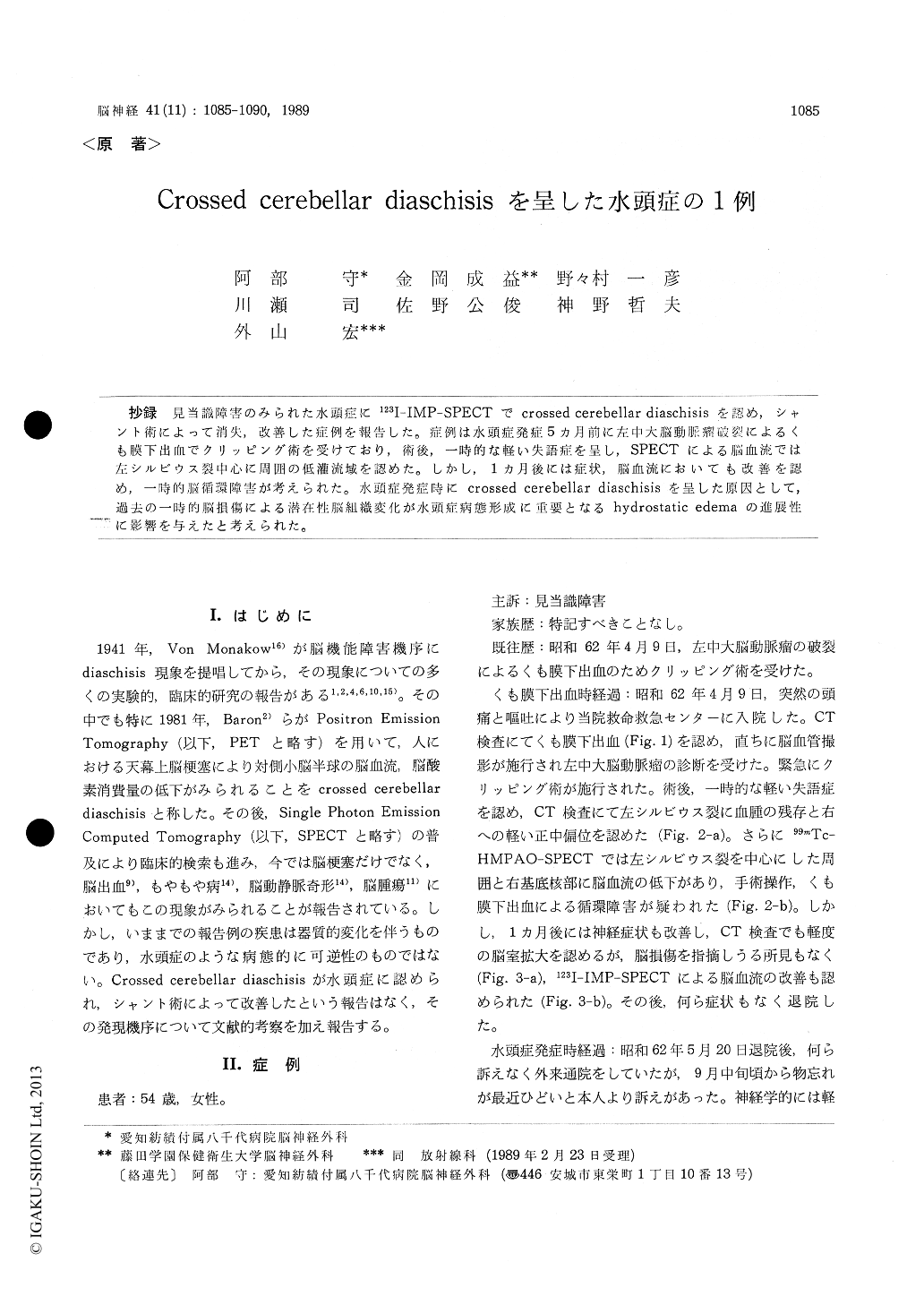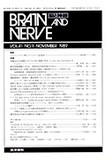Japanese
English
- 有料閲覧
- Abstract 文献概要
- 1ページ目 Look Inside
抄録 見当識障害のみられた水頭症に123I-IMP-SPECTでcrossed cerebellar diaschisisを認め,シャント術によって消失,改善した症例を報告した。症例は水頭症発症5カ月前に左中大脳動脈瘤破裂によるくも膜下出血でクリッピング術を受けており,術後,一時的な軽い失語症を呈し,SPECTによる脳血流では左シルビウス裂中心に周囲の低灌流域を認めた。しかし,1カ月後には症状,脳血流においても改善を認め,一時的脳循環障害が考えられた。水頭症発症時にcrossed cerebellar diaschisisを呈した原因として,過去の一時的脳損傷による潜在性脳組織変化が水頭症病態形成に重要となるhydrostatic edemaの進展性に影響を与えたと考えられた。
A case of hydrocephalus in which a crossed cerebellar diaschisis with single photon emission CT (SPECT) using 123I-iodoamphetamine (123I-IMP) disappeared by a ventriculo-peritonial shunting operation, was reported. A 54-year-old female had a clipping surgery for a aneurysm of the left mid-dle cerebral artery on April 9, 1987. Post-opera-tively, she had a transient mild aphasia. Cerebral blood flow (CBF) study with 123I-IMP-SPECT had showed low perfusion in the left frontal and tem-poral lobe. But after a month, clinical symptom and CBF findings had improved.
She had been doing well after the discharge until October, 1987, when she developed disorien-tation. CT on re-admission showed the ventricular dilatation with periventricular low density (left> right). 123I-IMP-SPECT study showed the crossed cerebellar diaschisis which was a low perfusion in the left frontal, temporal, parietal, thalamus, basal ganglionic area and in the opposite cerebellum.
A ventriculo-peritonial shunting operation was performed which brought the disappearance of the crossed cerebellar diaschisis and the clinical im-provement.
The phenomenon of crossed cerebellar diaschi-sis has been reported in a lot of literatures. However, those diseases were located in unilate-ral supratentorium. It has been specurated that crossed cerebellar diaschisis is the transneural metabolic change through the cortico-ponto-cere-bellar pathway by supratentorial lesion.
Crossed cerebellar diaschisis in hydrocephalus has not been reported so far. As the mechanism of crossed cerebellar diaschisis in this case con-cerned, we specurate that the change of the brain tissue pressure by the transient brain damage in the past history, may cause abnormal extension of hydrostatic edema, resulting in transneural meta-bolic depression on the cortico-ponto-cerebellar pathway. It may be suggested that neural function is variable in hydrocephalus with brain damage.

Copyright © 1989, Igaku-Shoin Ltd. All rights reserved.


